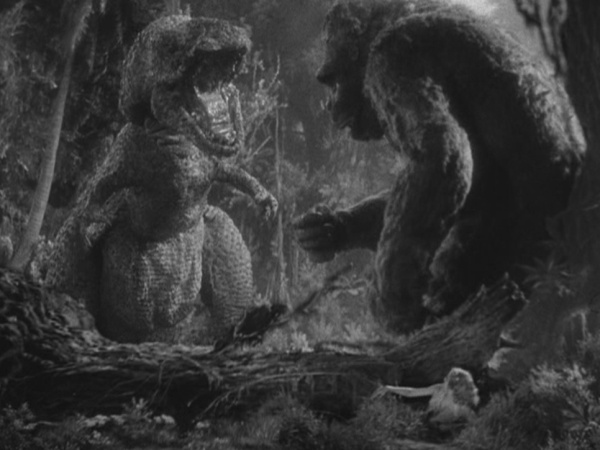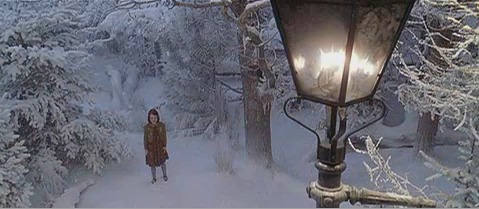George Clooney’s Good Night and Good Luck is now wrapping up its run in Australian cinemas: I saw it weeks ago, but didn’t write a review partly because I was busy with other things, and partly because I was a bit underwhelmed by it. After the rapturous reception it has been greeted with (notably the 5-star reviews of David Stratton and Margaret Pomerantz) I expected a lot more. There are a lot of good things about it – notably David Strathairn’s wonderful performance as Edward R. Murrow, and George Clooney’s direction – but it struck me as terribly written. The screenplay seems almost to deliberately downplay drama: there was never a feeling of just how all-encompassing the fear of McCarthy must have been, and Strathairn’s Murrow seemed to outplay McCarthy at every turn. The first serious consequences for Murrow and his colleagues don’t happen until the very end of the film.
Stephen Rowley
This article was originally published in the January-March 2006 issue of Senses of Cinema (here).
“You’re on to a much safer bet liking someone like Martin Scorsese, whose genius shows up in all the fully approved forms – plowing a lonely course outside the studio system, obsessively burrowing down into an identifiable subset of obsessions, tearing films from his breast like chunks of his own flesh – than you are liking someone like Spielberg: devoid of visible self-destructive impulses, alighting on film after film as if giving his imagination an aerobic workout, athletically slam-dunking one box office record after another… if that guy also turns out to have been the most talented filmmaker of his generation, then what, frankly, was the point? What was the point of all those hours passed in the dark confines of the art house, boning up on Ukrainian cinema, watching the unwatchable? But there you go. What can you do. If you have to point to any one director of the last twenty-five years in whose work the medium of film was most fully itself – where we found out what it does best when left to its own devices, it has to be that guy.”
Just a quick post to note the passing of Norm McCabe, who died on 18 January aged 94. McCabe was the last of the directors from the Warner Bros animation studio in its classic era: a handful of animators are left alive (Bill Melendez pops up looking very sprightly in interviews on the Looney Tunes DVD sets, for example) but now all the directors and notable story artists are gone.
I’m not terribly familiar with McCabe’s cartoons: he certainly wasn’t a major director, and like Arthur Davis only got a short spell as director (he left the position for military service). Unlike Davis, who is pretty well regarded by Warners fans, his cartoons aren’t very frequently revived. However, like Joe Grant, the guy had staying power: he was doing work on Tiny Toon Adventures in his eighties.
A little more about McCabe can be found here, here, and here.
It’s really too soon to be editorialising on Brokeback Mountain again – particularly as I haven’t seen it and probably won’t have a chance to review it this weekend. There almost isn’t any point arguing about this – from what I can gather, the film doesn’t seem to say anything terribly controversial: when Fred Nile decries it, he’s really just suggesting that he thinks a film about gay cowboys shouldn’t exist, and if someone’s that far gone there’s not really much arguing that you can do with them. So I should just move on.
I haven’t seen Brokeback Mountain, but I’m already glad it won the Golden Globe for Best Drama. Why? Because it will upset people such as the conservative politician Fred Nile, who in this story on (Australian) ABC radio spoke out against the film.
But he has our interests at heart: he’s trying to spare us from confusion. To quote from the ABC’s story:
FRED NILE: I think it’s causing a great confusion to have two homosexual cowboys after all the popularity of the cowboy theme in American themes [sic].
The animation directors on Peter Jackson’s King Kong were Christian Rivers and Eric Leighton.
I mention this because from all the media coverage, you might assume that Andy Serkis was the single-handed creator of the character of Kong, just as many sources suggest that he was the single-handed creator of Gollum in Lord of the Rings. It has been suggested, for example, that Serkis’ work on both characters was worthy of Oscars for Best Supporting Actor (and, indeed, Serkis did win several acting awards for Gollum, as listed on his website). Yet, as should be obvious, Serkis is not the sole creator of either performance: both Gollum and Kong represent a blend of the performances by Serkis and the various animators at Weta Digital. Even an article as informative as this one at ComingSoon.Net – which does discuss the split between Serkis’ work and the animators in some detail – is based only on Serkis’ account and runs under the headline “Andy Serkis IS King Kong.” And of course the credits of the movie include a credit reading simply “Andy Serkis as Kong.”
King Kong (Merian C. Cooper & Ernest B. Schoedsack, 1933) and
King Kong (Peter Jackson, 2005)
If you ever wanted to be reassured that it’s okay to like big special effects blockbusters, have a look at the reputation of the 1933 version of King Kong. The film is a solid, rolled-gold classic, and makes a strong showing in any of the dubious-but-fun movie popularity contests: it is in the American Film Institute’s Top 100 List; Christopher Tookey’s The Critics Film Guide cites it has having an average critical rating of 9.53 out of 10; the Internet Movie Database has it in its top 250 user-rated films; and so on. Received wisdom is a wonderful thing: once a film is a famous classic, and several decades old, it is easy to accept its status, and not think about why the film is so revered. Yet with King Kong it pays to ask the question. For the original King Kong is a forerunner to all the light-on-plot, big-on-special-effects blockbusters of recent years: as such, its continuing fame is something of a challenge to conventional critical wisdom, which tends to be dismissive of this kind of filmmaking.
The Chronicles of Narnia: The Lion, The Witch, and the Wardrobe (Andrew Adamson, 2005)
Given the billions of dollars poured by appreciative audiences into the Harry Potter and Lord of the Rings series, it was inevitable that we would see an adaptation of C.S. Lewis’ Narnia books, starting with The Lion, the Witch and the Wardrobe. Lewis knew and exchanged ideas with Rings author J.R.R. Tolkien, and The Lion, The Witch, and the Wardrobe has much in common with Tolkien’s novel. For Disney, the studio behind the new film, the appeal would have been irresistible: Lord of the Rings for the Harry Potter demographic, with a series of seven novels to be adapted if the first did well.
Continuing my occasional watch on movie listmaking, I thought I’d offer a few comments on the My Favourite Film list released last night by the ABC. For those who missed it, the list was as follows: Continue reading
Film has traditionally been the most inaccessible art form for budding artists. Writers can write with a pen and piece of paper; painters can paint with a canvas and paints; photographers need only a camera. It is skill, not equipment, that most limits budding artists in these media. Filmmakers, however, have faced daunting costs to access filmmaking equipment of any quality. When even such basics as cameras, film stock, lights, and editing equipment are so costly, low budget filmmakers operate within tightly constrained limits. Breakout low-budget hits (such as Robert Rodriguez’s El Mariachi, or Kevin Smith’s Clerks) are notable largely for their heroic overcoming of such constraints.

